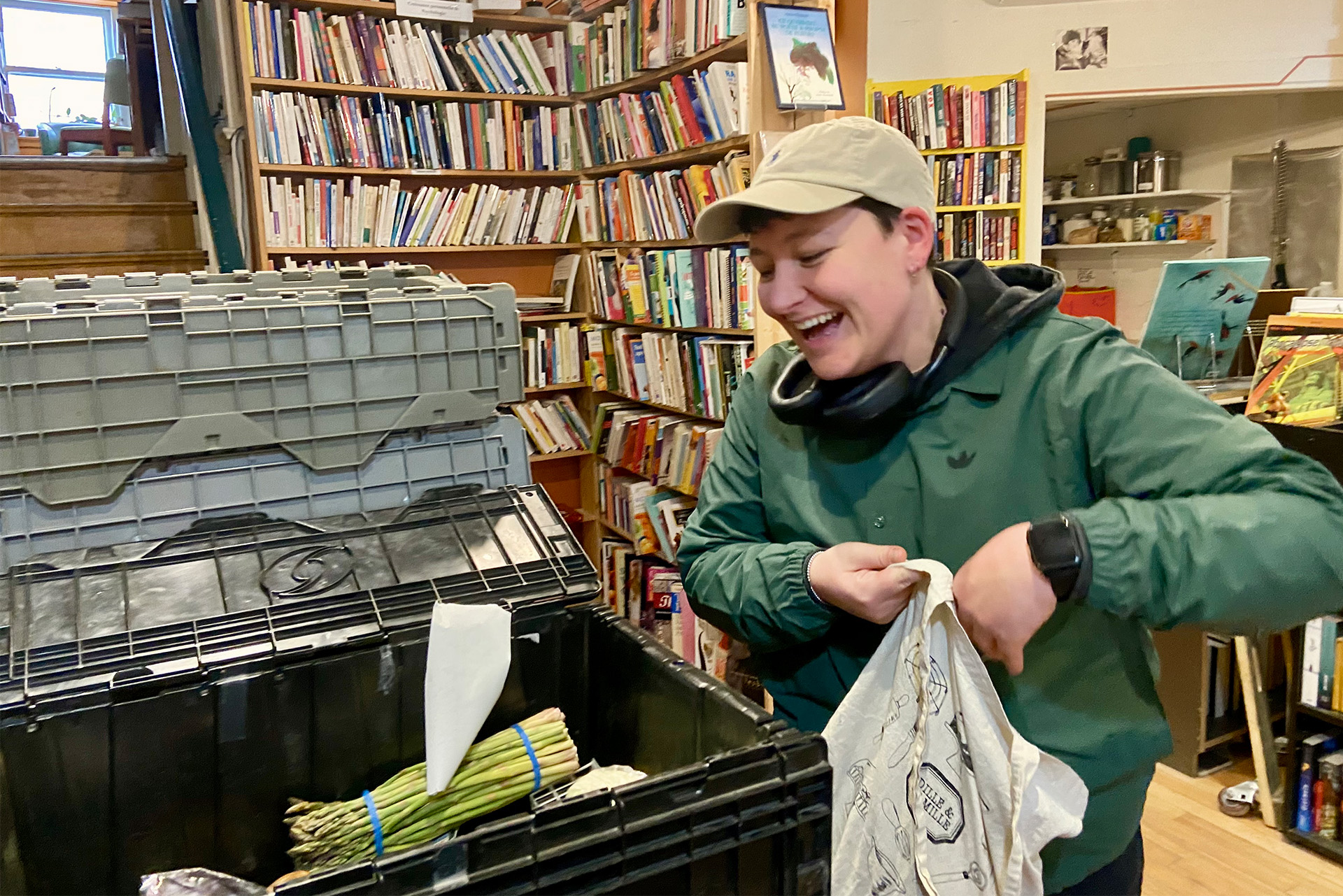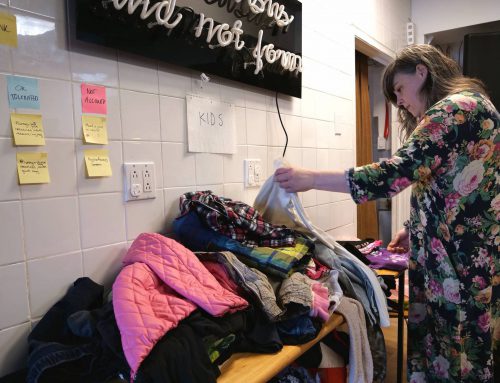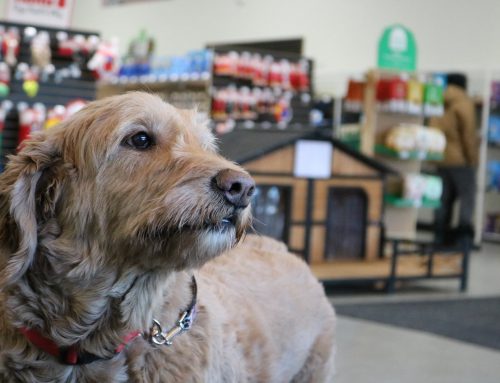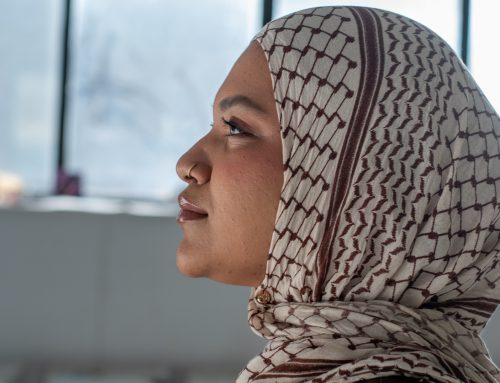BY Talia Kliot & Ivan de Jacquelin
As she walks through the IGA on Côte-St-Luc Road, Maisie Milstein carefully examines the produce she picks, paying special attention to how it feels in her hands and whether the price is right.
“If it looks nice, you’re more tempted,” she says, noting that depending on the type of produce, it might even taste better or stay fresh for longer.
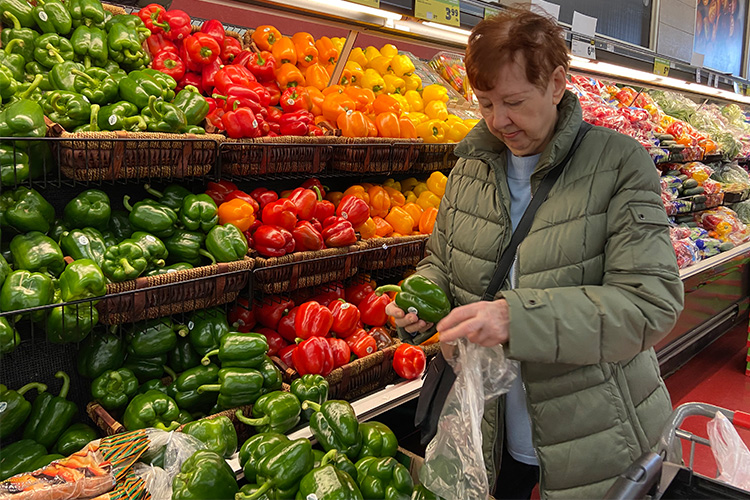
Milstein examines a pepper at the IGA on Côte-St-Luc Road. Photo by Talia Kliot.
Marché SecondLife is an online grocery store that recuperates food products that would otherwise be discarded and sells them at a cheaper price. For subscribers, it’s not about the look of the food—it’s what’s on the inside that counts.
Since Marché SecondLife’s start in 2015, CEO and founder Thibaut Martelain’s mission is to make sure that good food doesn’t go wasted.
“I realized that there was a lot of loss occurring at farms and also at food manufacturers,” he says.
Martelain explains that waste happens when food items don’t conform to certain aesthetic standards, have packaging or labelling issues, or a shorter-than-ideal shelf-life. Farms and manufacturers sell these products to Marché SecondLife at a discount, which they then sell to their customers at a reduced cost.
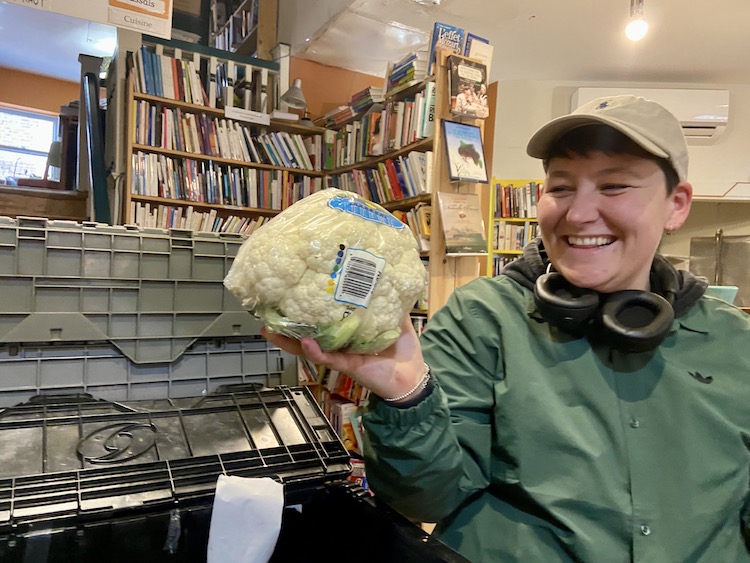
Marché SecondLife subscriber Amina Kulic shows off a cauliflower from her box. Photo by Talia Kliot.
According to Martelain, Marché SecondLife saved 300 tonnes of food waste in 2022. But this is only a fraction of the amount of food wasted in Quebec annually.
A 2022 Recyc-Québec study found that while 7.5 million tonnes of food enter the bio-food system every year, only 4.4 million tonnes are consumed. The remaining 3.1 tonnes end up as food waste. Thirty-nine per cent of that waste is still edible, the rest is compostable.
This is happening while 13.1 per cent of Quebec households describe themselves as food insecure.
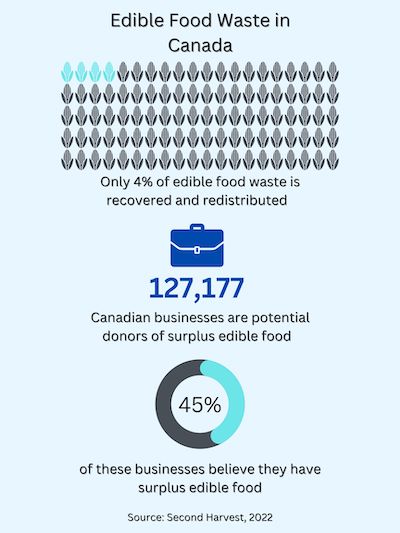
What happens to edible food waste in Canada? Media by Talia Kliot.
Marie-Andrée Mauger is the Montreal Executive Committee member responsible for the environment. She says the city wants to reduce food waste in 2025 to half what it was in 2015. A big part of this includes making composting accessible to everyone by 2025.
“We have already a few strategies and we will be working towards implementing some more action during the course of this coming year,” Mauger says.
“2025 is very ambitious,” Mauger says, explaining that the pandemic “really changed the pace of certain actions. But still, our vision is really zero waste in 2030.”
Recyclable waste management is one of the challenges that the city will have to tackle before the 2030 deadline. Video by Ivan de Jacquelin.
The city has spent the past few years compiling data and information from public consultations. The city’s committee on Water, the Environment and Sustainable Development recently released 21 recommendations that work towards a circular food economy.
The city plans to work towards implementing a bylaw that bans food waste from going to landfills, says Mauger. But before they can do that, businesses and organizations must be mandated to declare how much food waste they produce, so the appropriate measures to redistribute or compost it can be put in place.
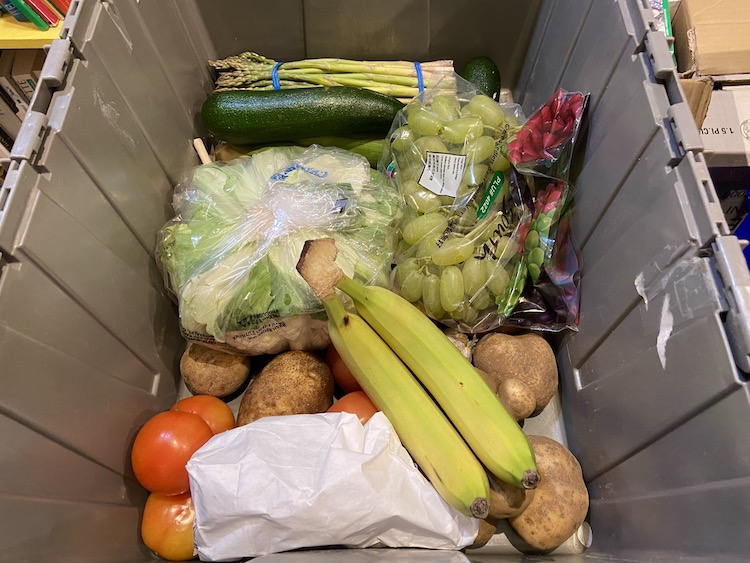
A box of Marché SecondLife produce. Photo by Talia Kliot.
One of these redistribution measures is La Tablée des Chefs, a non-profit organization that connects large kitchens (in hotels and stadiums, amongst others) and community organizations with the goal of redistributing the excess food to people in need.
Founder and executive director Jean-François Archambault says he’s in talks with the city of Montreal to include “proposing the services of La Tablée des Chefs to any event happening in the city” in their food waste management plan.
“It’s been a long time that it’s needed,” says Archambault. “And we’re working with the city to try to make that fit in their strategy.”
La Tablée des Chefs operates by coaching the culinary teams of big kitchens on how to package up excess food, and providing containers and strategies to put it aside safely for the community organizations to pick up.
“We are there to make sure that the transaction of recovering food happens, and that it happens seamlessly so that everybody is comfortable, from the donor to the receiver,” says Archambault.
La Tablée des Chefs’ food recovery program is currently in place in over 200 establishments across Canada, including the Bell Centre.
And from the Bell Centre alone, La Tablée des Chefs recovers 80,000 food portions annually.
“Visually, you would fill the arena four times […] and give everyone a free meal,” says Archambault. “But still, it doesn’t reduce or it doesn’t work on the actual cause of that excess food or that food waste.”
Food sovereignty activist and Concordia professor Erik Chevrier says that while initiatives like La Tablée des Chefs and Marché SecondLife are doing good work to keep food waste out of landfills, they are a band-aid solution in the long run.
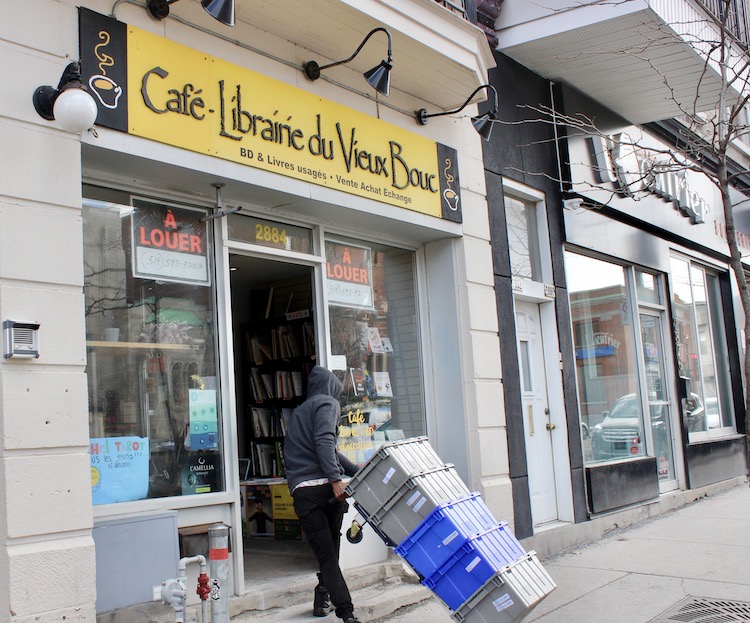
A delivery person drops off Marché SecondLife boxes at Librairie Au VieuxBouc for subscribers to pick up. Photo by Talia Kliot.
“They’re still relying on these kind-of problematic supply chains,” says Chevrier, explaining that the current food system is built on the importation of products since it’s cheaper and will make more profit. “The food still exists, and it’s still in Montreal, and it’s good to get it to people. But I think people need to rethink this whole system. To me, food sovereignty is really about really prioritizing local food.”
Chevrier explains that it’s necessary to work towards creating a closed loop system, where compostable waste goes right back to fertilize the farms it came from, all edible food is eaten, and people are prioritized over profit margins.
But until that becomes a reality, initiatives like Marché SecondLife and La Tablée des Chefs will keep trying to expand their efforts.
“To save even more food, we need to have more customers,” says Martelain.
In the coming years, Marché SecondLife plans to increase their product offerings and attract more people who are all about the food less about how it looks.
“I can’t wait to see where we’re going,” says Archambault.
